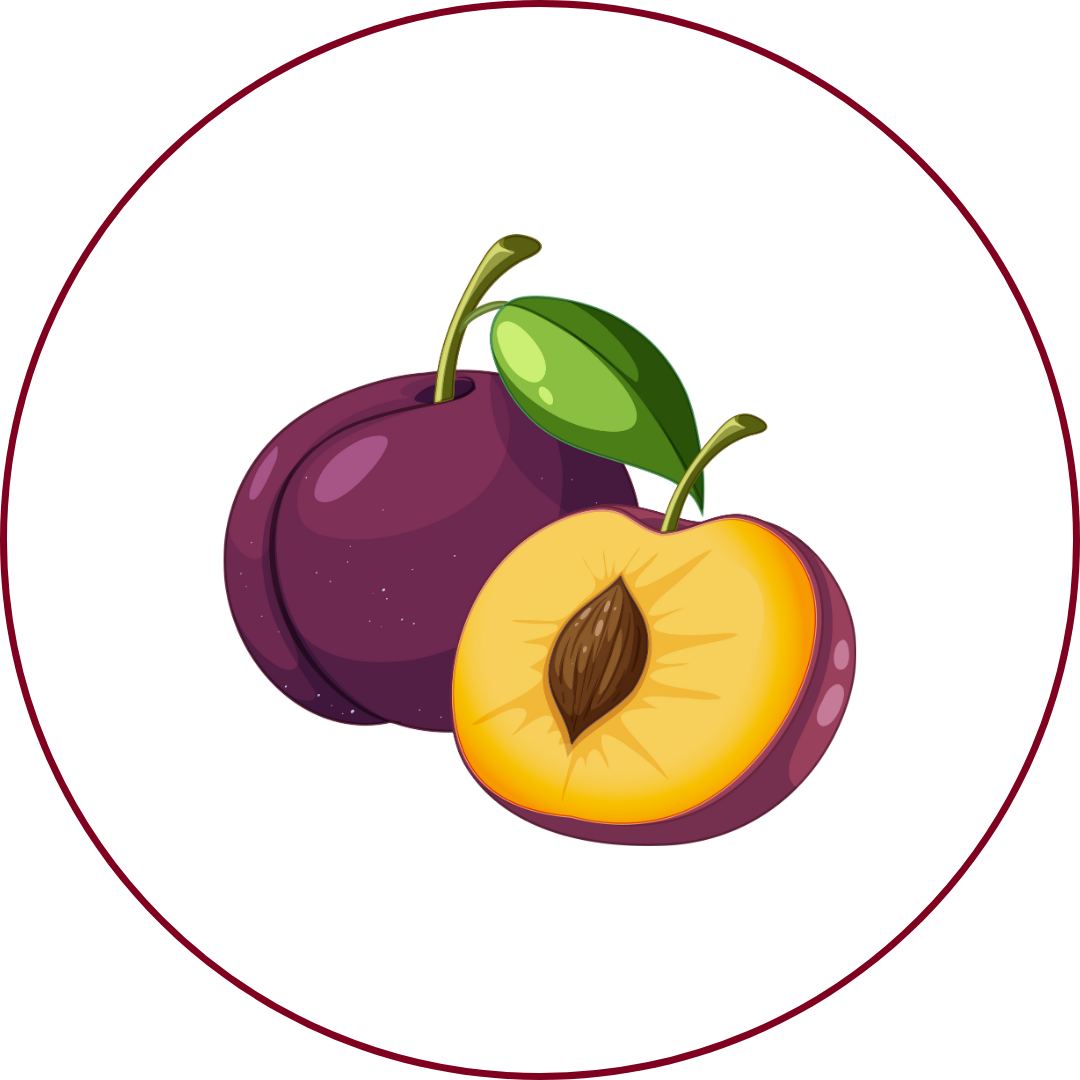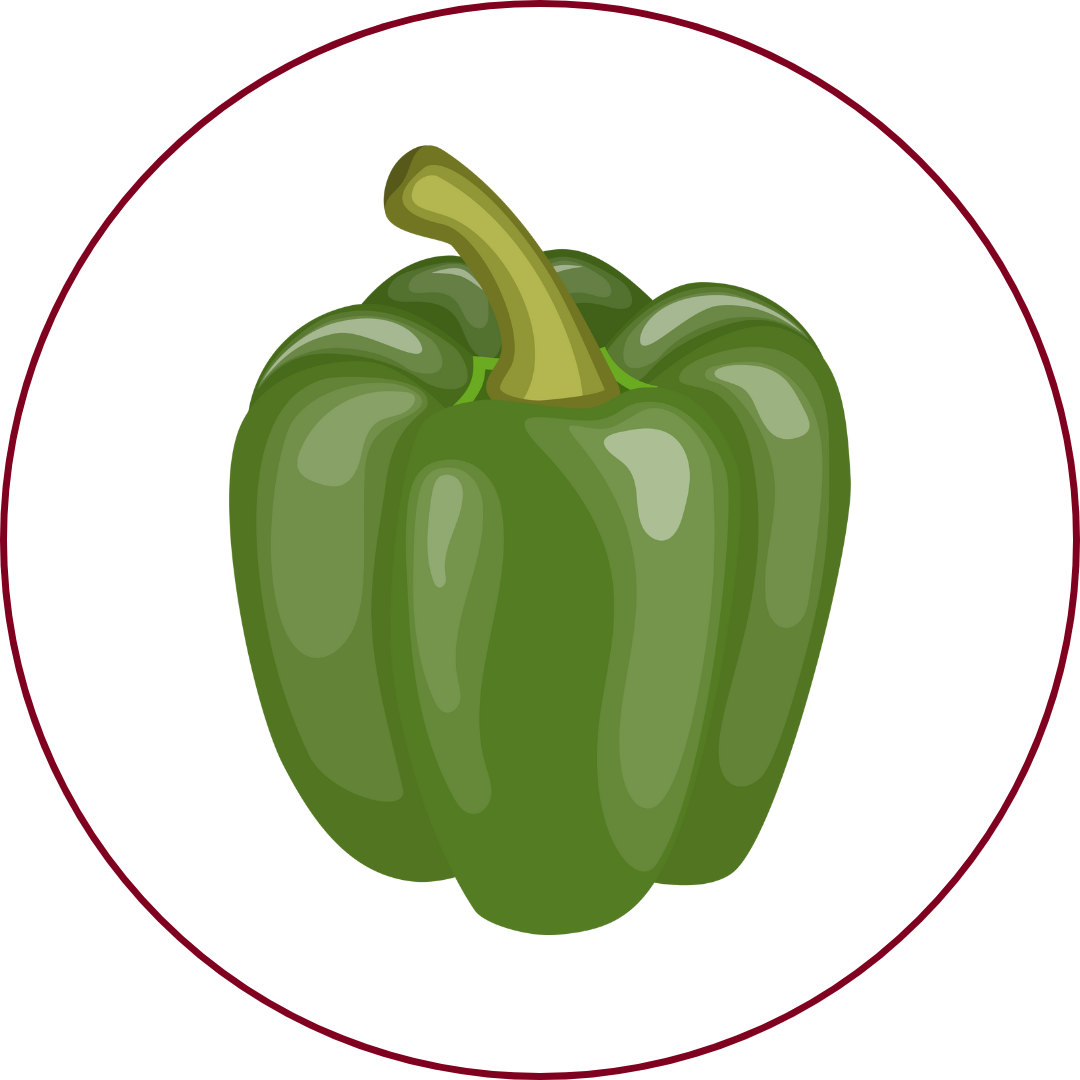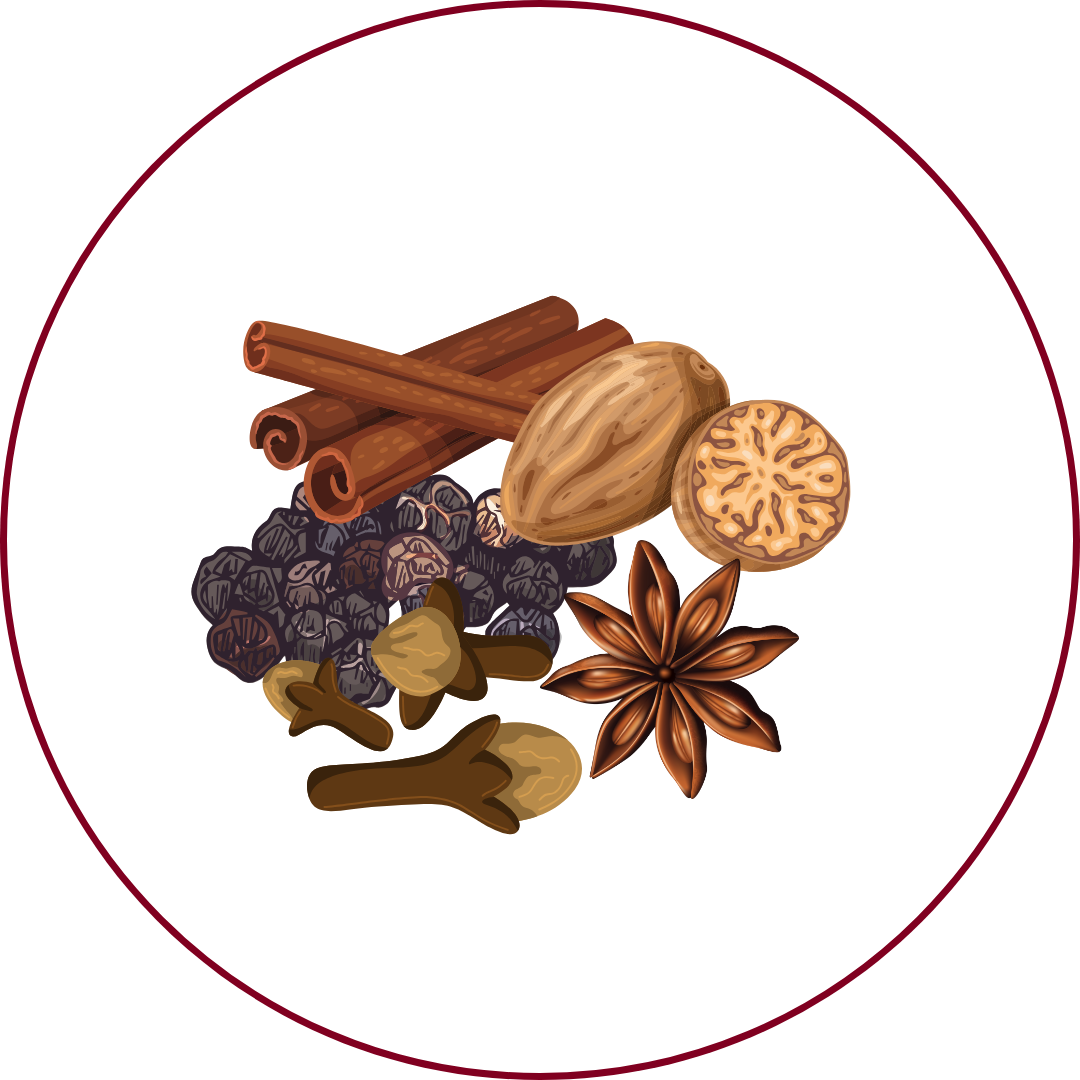Grape Variety
Carmenere
"car-men-AIR"
Wine Styles
 Sparkling
Sparkling Light White
Light White Full White
Full White Aromatic
Aromatic Rosé
Rosé Light Red
Light Red Medium Red
Medium Red Full Red
Full Red Dessert
DessertAbout Carmenere
Origin
Bordeaux, France
History
Carménère is one of the oldest European grape varieties, originally from the Bordeaux region of France. It was thought to be extinct after the phylloxera plague in the 19th century but was later rediscovered in Chile, where it had been mistakenly identified as Merlot. Today, Carménère is considered a flagship grape of Chile, thriving in its vineyards and producing distinctive wines.
Appearance
Medium-sized, thick-skinned, deep purple berries growing in loose clusters.
Growing Traits
Carménère is a late-ripening variety that requires ample warmth and sunshine to reach optimal ripeness. It is highly vigorous, and its lower buds are not very fertile, necessitating careful vineyard management. The grape thrives in well-drained, warm soils and is known for its deep crimson foliage in autumn.
Wine Characteristics
Body
4/5
Sweetness
1/5
Tannin
3/5
Acidity
3/5
Alcohol
4/5
Medium to full-bodied with a rich and velvety texture, offering depth and concentration. Dry, with minimal residual sugar, focusing on dark fruit and herbal flavors. Medium tannin levels, providing structure without being overly astringent. Medium acidity, contributing to balance and freshness, enhancing the wine's food-pairing versatility. Moderate to high alcohol content, typically ranging between 13% and 14.5%, ensuring balance and intensity.
Taste Profile

Blackberry

Plum

Green Bell Pepper

Spice

Dark Chocolate
Carménère wines are characterized by dark fruit flavors such as blackberry and plum, complemented by distinctive green bell pepper and spicy notes. Hints of dark chocolate add complexity, all balanced by medium tannins and acidity, leading to a smooth and lingering finish.
Food Pairing
Carménère's rich fruit flavors, moderate tannins, and subtle green pepper notes make it a versatile partner for a variety of dishes. It pairs well with grilled meats, spicy cuisine, and dishes featuring bell peppers or herbs. The wine's balanced acidity and smooth texture complement roasted vegetables and aged cheeses, enhancing the overall dining experience.
Growing Regions

Chile
Central ValleyColchagua ValleyMaipo Valley

France
Bordeaux

Italy
Lombardy

China
Ningxia
Notable Wines & Producers
Casa Silva Carménère
Viña Casa Silva
Concha y Toro 'Terrunyo' Carménère
Viña Concha y Toro
Montes Alpha Carménère
Viña Montes
Carmenere FAQ
Common questions about this grape variety
What is the origin of Carmenere?
+
Bordeaux, France
Is Carmenere wine full bodied?
+
Carmenere has a body level of 4 out of 5. Which means that Carmenere is Moderate to Full bodied.
Is Carmenere wine dry or sweet?
+
Carmenere has a dryness level of 1 out of 5. Which means that Carmenere is Dry.
Where is Carmenere wine from?
+
Bordeaux, France
Where is Carmenere grown?
+
Carmenere is grown in Chile (Central Valley, Colchagua Valley, Maipo Valley)France (Bordeaux)Italy (Lombardy)China (Ningxia).
What is Carmenere like?
+
Carménère wines are characterized by dark fruit flavors such as blackberry and plum, complemented by distinctive green bell pepper and spicy notes. Hints of dark chocolate add complexity, all balanced by medium tannins and acidity, leading to a smooth and lingering finish.
What does Carmenere pair with?
+
Carménère's rich fruit flavors, moderate tannins, and subtle green pepper notes make it a versatile partner for a variety of dishes. It pairs well with grilled meats, spicy cuisine, and dishes featuring bell peppers or herbs. The wine's balanced acidity and smooth texture complement roasted vegetables and aged cheeses, enhancing the overall dining experience.
What does Carmenere taste like?
+
Carménère wines are characterized by dark fruit flavors such as blackberry and plum, complemented by distinctive green bell pepper and spicy notes. Hints of dark chocolate add complexity, all balanced by medium tannins and acidity, leading to a smooth and lingering finish.
Take Carmenere Knowledge with You
Access detailed grape profiles, tasting notes, and pairing suggestions on your iPhone.
Download on theApp Store